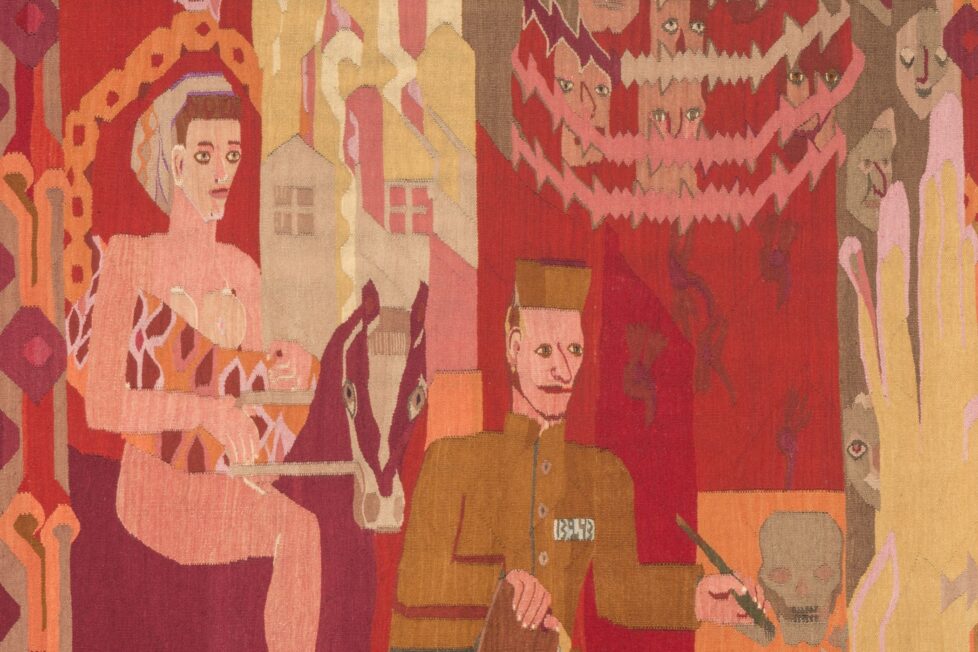
Fredag denne uken åpner Lunds Konsthall i Syd-Sverige en retrospektiv utstilling med den New York-baserte videokunstneren Michel Auder. Auder kjøpte sitt første Sony Portapak videokamera i 1969 og har i mer enn førti år «malt sitt liv» med levende bilder.
Michel Auder ble født i Frankrike i 1944 og kom til New York på slutten av 1960-tallet. I et intervju med den danske kunstteoretikeren Lars Bang Larsen sier Auder at han «ramlet inn på kunstscenen,» hvilket i hans tilfelle betød Andy Warhols Factory. I følge Bang Larsen er det likvel ikke riktig å kalle Auders dagboklignende videokunst for popkunst. Dersom Andy Warhol var entrepenøren var Auder New York-scenens franske eksistensialist, i følge Bang Larsen.
På 1970-tallet gjorde Auder Chelsea Girls (1971–1976) sammen med Warhol, og skapte en parodi på Hollywood med filmen Cleopatra (1970). Sistnevnte ble nektet vist i programmet for uavhengige filmer på filmfestivalen i Cannes – av Auders egen produsent. Heller ikke i dag – førti år senere passerer hans stadig resirkulerte og nyredigerte collagefilmer gjennom nåløyet på filmfestivaler som Sundance og Brooklyn.
Det er derfor passende at Auder vises innenfor rammen av kunstinstitusjonens, som kanskje har større toleranse for formale eksperimenter enn filmfestivalene. Det kan selvfølgelig være en tålmodighetsprøve å se den 11 timer lange A Personal Narrative of Travels to Bolivia fordelt på 11 plasmaskjermer, men så er ikke nødvendigvis hensikten heller å se alt men å gi filmene et rom å utfolde seg i.
Utstillingen i Lund består av 20 arbeider fra perioden 1971–2010. Den tre timer lange, fiksjonaliserte selvbiografien The Feature (2008) er imidlertid tatt ut av utstillingsrommet. Denne filmen vises i stedet på en lokal kino.
Kunstkritikk har stilt Michel Auder våre faste ti sprøsmål per epost. Vi velger å trykke svarene på originalspråket.
1. How are the preparations for your upcoming show at Lunds Kunsthall going?
Moving along, moving along, moving along…
2. What do you consider the most important aspect of this exhibition?
That would be my work… I guess…
3. When, How and why did you become an artist?
That’s a loaded question.
When: According to my father, I always was. In my preteens I was not doing well at school and his reaction was to call me «l’artiste» in an uncomplimentary way.
How: I kept using, without being asked, tools that record images and sounds.
Why: I did not meant to be an artist or not being an artist. I just keep making all kinds of movies independently for the last 45 years or so. And the only «world» interested my works is the Art World. It is NOT the Film World. NOT the Television World. I feel honored and pleased by the recognition.
4. How do you see your role as an artist today?
My goal is to translate the appearance of my time according to my appreciation of it.
How does one make sense of living, of emotional life, of struggle and pleasure (of course)? Those things have social and political implications. I am not trying to change the world. My work is not political in that sense. I am not illustrating political propaganda or having an agenda…
5. How would you describe your working method?
Making movies with whatever I have at hand. Kind of bricolage, improvising like poetry and painting and trying to invoke that same spirit in the moving image. Recording footage and editing are equally important. It takes a lot of time and requires a lot of thinking.
6. Can you mention current art or projects/practices that inspire you?
Painting, photo, sculpture, independent movie making, not in any order.
7. What role does theory play in your work and what theorists have inspired you lately?
May be the «one day at a time» theory. People’s words are very important in my work, but I’m not limiting myself to what has already been written. I record what is being said and use it for my own purposes.
8. How can visual artists make a living and still maintain a critical attitude towards the commercial art market and governmental funding bodies?
Compromise is the name of the game. The entire world is a compromise. Every one has to make a living. Artists are not different. They are the mirrors of society. Some are good, virtuous. Some are immoral, odious. Some are pleasant. Some are deleterious, nasty. Some maintain a critical attitude. Some sell out. Some…
Often too much money given to one artist turns out to be a bad thing.
This is not the case for me. I could use more of that corrupting money without any worry of losing on my critical attitude.
9. How can we theorize and historicize contemporary art?
Beats me. I am not an art theorist or an art historian.
10. What would you change in the world of art?
Everything, every day.



















